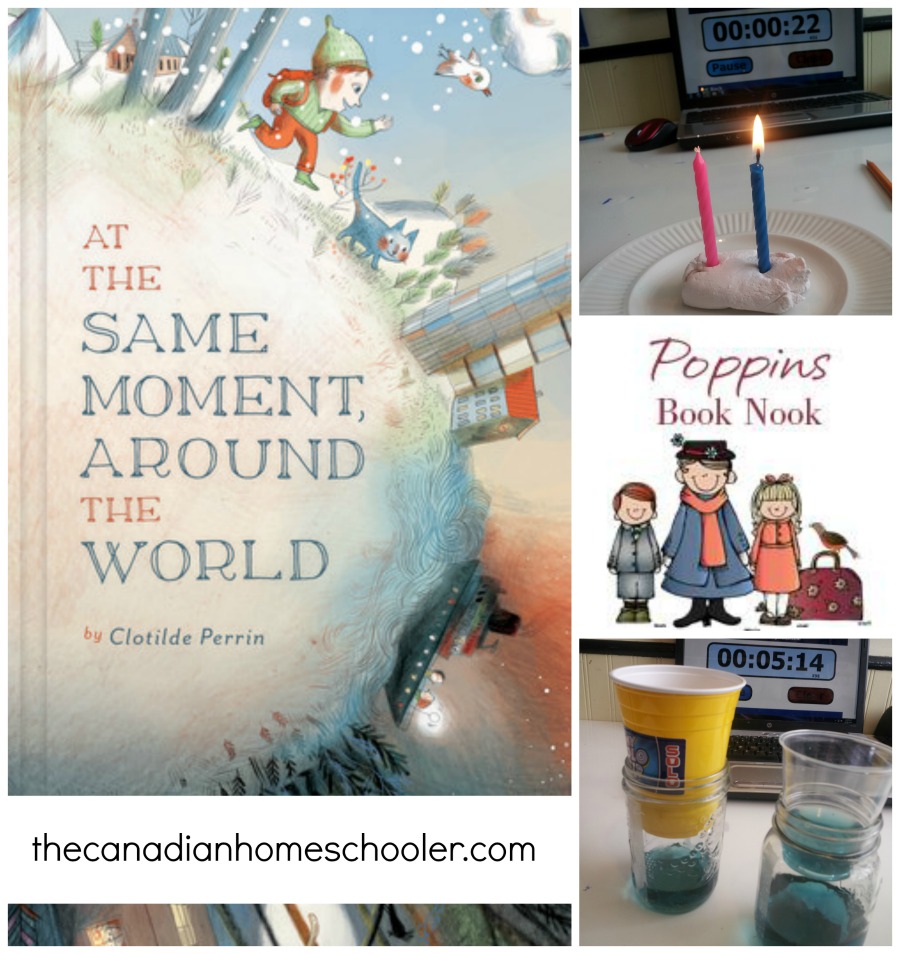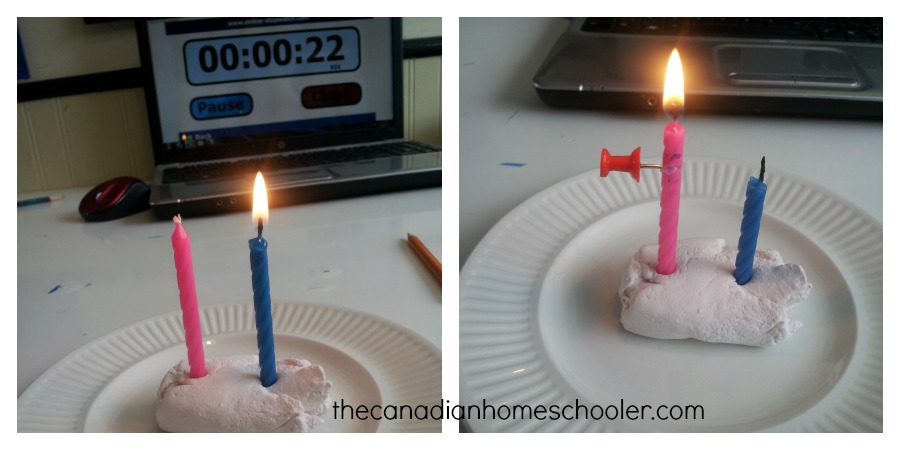This post is part of a series of book club called Poppins Book Nook, where each month we read a story based on a theme and did related activities. The theme for this story was “Where in the World?” – I am excited to be using a book brought to Canada through Raincoast Books.

About the Book
Title: At the Same Moment, Around the World
Author: Clotilde Perrin
Summary: Readers head eastward from the Greenwich Meridian, from day to night, with each page portraying one of (the original) twenty-four time zones.
What We Thought:
My kids were enraptured by this book. They were amazed that it was a completely different time as we moved around the world and then came all the way full circle back to where the book started. The pictures were fun to look at – each page showcasing what was going on at the time for that zone. My boys liked finding where the character mentioned for that page was. I found the artwork unique.
Inside the back cover of the book is a lift out map of the world, that shows the journey from Senegal all the way east, touching in each time zone along the way. I like how they touched different countries and continents along the way – everything from Dubai to San Francisco, Ayers Rock to Baghdad, Tokyo to Mexico City. (Sad though that there’s no Canadian location – boo! 😉 )
At the back of the book is a section all about the history of timekeeping and the origins of the creation of our timezones. This started a discussion for us about how people would have known what time it was before there were clocks like we have today.
Hands-On Fun
First, we found a world clock that showed us what time it was in other places. It gave the kids a great idea of how different it is at the exact same time all around the world. We did feel a little confused about how it can be 3am on a Sunday in Hawai’i but be 3am on Monday at Christmas Island (which is close by!) This followed with some jokes about starting the day over and finding the timezone line to time travel.
Next, we checked out some live webcams of cities from around the world. This gave a live-action opportunity to see that time is different around the world at the same time. For example, we checked out Australia and it was night time there. It was a great way to get that understanding.
We finished off the day by figuring out how to tell time if all our digital and analog clocks mysteriously stopped working. They all agreed that the sun would be the best solution, so we attempted to make a sundial. There was a slight flaw with that plan though – it was a very cloudy day, and no shadow would appear on our clocks! Sundials work great…. if there’s sun! Not so effective at night or in cloudy weather. Also, because angles of the sun are slightly different in different places – it would cause the time to be off between the places. That could be a pain if accuracy mattered!
Another method of timekeeping was a water clock – basically, where you have a consistant drip of water from one container to another that marks the passage of time. This year we’ve been chipping away at ancient history and have heard of these a few times. So we decided to make our own, using plastic cups and mason jars.
- Poke a hole in the bottom of the plastic cup and place into the mouth of the mason jar.
- Put a piece of tape on the jar to mark time passage.
- Pour in some water, start a 5 minute timer and watch the water drip through.
- Mark the height of water at 5 minutes.
- Repeat until out of water or jar is full.
This was a fun project – however we chose to do 15 minute intervals which was far too long. We did find some interesting problems with this time keeping method:
- When we added more water to our cups, the water ran faster and in stream instead of a drip.
- This method would require a lot of water and a large bowl system in order to track long periods of time
- It’s definitely not reliable or exact – as each of our 4 attempts had different results. In fact, 2 of them only worked for a few tries and didn’t drip at all for other tries. It was very frustrating.
Our last experiment was to try candle clocks. We took a couple of birthday candles (since they burn quickly and we’d already spent a lot of time on the water clock. We lit one, started the timer and then marked off what had burnt off on the other candle. Although it was a steady burn, we did discover a few things. If there was a breeze (like someone pretending to blow out said candle for no apparent reason), it affected the speed at which the candle melted, throwing off our marks slightly. We also tested out how to set an alarm using the candle clock – sticking in a pin (or a nail) so that when the candle burnt away it would fall to the table, making a noise. So smart!
This was a really fun way to learn about the passage of time and how it is different around the world.
Poppins Book Nook clip art by Melon Headz
- How to Keep a Toddler Busy While Homeschooling - March 21, 2024
- 25+ Things Your Kids Learn From Video Games - March 20, 2024
- 10 Words For New Homeschoolers - March 20, 2024



What a neat book! I love the time experiments that can go along with it.
I can understand why your kids were enraptured with this book.It sounds awesome! The candle clock experiment is a really neat idea. I would like to try that with my kids.
Thank you for helping to bring a spoonful of reading fun to the Poppins Book Nook this month!
I love your time exploration – you are so very creative! <3 Some clocks can be really frustrating, especially if they don't work correctly, LOL.
Looks like a great book, and there are so many fun things you can do with it!
Those activities are too cool! I’m going to have to look at the library for this book because my children have no understanding of time zones 🙂